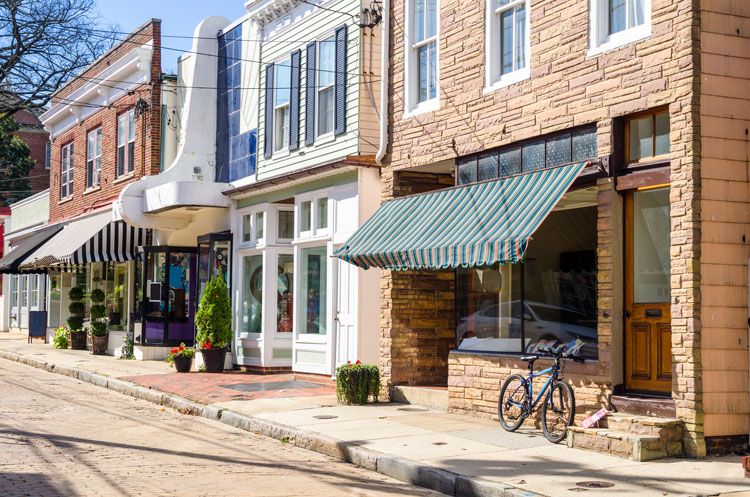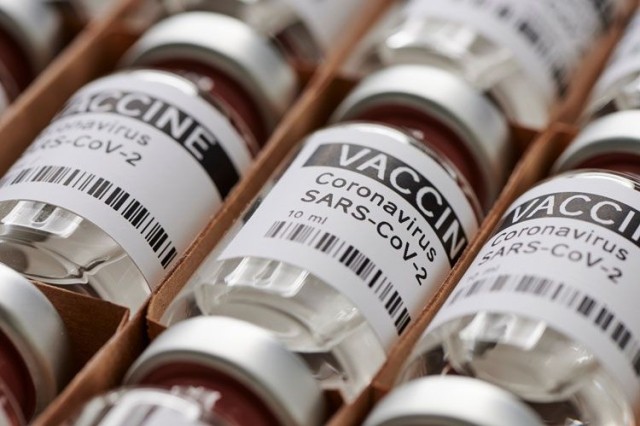Blog
How to Approach Property Insurance Claims Related to COVID-19, Protests, and Other Perils
What happens if your business property—whether it’s your physical space or your equipment and inventory—is impacted by an unexpected event such as the coronavirus (COVID-19), a protest, theft, vandalism, fire, or another peril? How would your insurance policies respond? In filing a claim, you should follow proper steps right from the start, from identifying the damage and reporting it to your insurance broker, to timely notice of the claim to the insurer and providing strong documentation with your claim submission. In this blog post, I will focus on what happens once the claim is noticed, and terms and conditions in your policies to pay attention to that may impact coverage. It’s important to know what's covered, the type of coverage, and exclusions if you're going to determine what to do next.

What's Covered?
Most property policies cover physical loss to the insured's property. If in doubt, include it in the claim submission for consideration.
I recommend that you report your losses in a timely manner. In fact, depending on your case you may want to consider reporting any losses experienced during the peril right away or at least prepare by creating a project code or separate general ledger to track claim-related costs.
Then, you'll be able to run reports for submission to the insurer/adjuster in support of the amount claimed. Delays in reporting a claim could impact the coverage investigation, preservation of evidence, and delay confirmation of coverage if the late reporting prejudices an insurer’s position.
What Is Considered "Damage?"
Most people think of "damage" as something that is burned, broken, wet from water, scratched, etc. because they can see it.
However, in many policy interpretations and courts, "damaged" can be defined as "a change in condition" (a definition I have used several times as an expert witness). Insurers don't like that definition because it broadens their coverage grant/insuring agreement.
Property that is exposed to COVID-19, for example, should be deemed "damaged" by direct physical loss (it was clean before; now it's contaminated or "dirty").
As an example here, the insured would have sustained property damage and income loss because the COVID-19 virus can spread easily from person to person and it is physically causing property loss or damage due to its tendency to attach to surfaces for prolonged periods of time.
The property is impaired, and the insured has to suspend their business operations to perform repairs/cleaning before they can resume operation. The insured is forced to close the main operating location(s) and postpone production operations to perform cleanup and follow stay-at-home policies in response to COVID-19.
Due to the property damage and enactment of these orders, and similar lockdown orders in countries around the world, companies are incurring expenses including but not limited to extra expense and lost revenue yet to be fully determined.
The question then is: Did the insured have coverage for "contamination" or similar such as "communicable disease?" If so, business interruption and extra expense coverage may then be triggered.
The Types of Coverage
Property Policies Versus Cargo Policies
Property policies covering property damage losses may include payment for repair/replacement of tangible property. Loss of income, extra expenses, crisis response, cost of decontamination, sanitizing, and other extensions are usually subject to separate limits and deductibles or waiting periods.
For inventory or cargo/stock throughput (STP) coverages, the inland marine policies may have broader coverages than the standard property policy. Although the policy rarely provides any coverage for business interruption, the "valuation clause" may play an important role in a client's recovery from business interruption losses.
For example, if the policy pays for "replacement cost," then it would pay for the replacement of product/inventory that sustains damage (i.e., labor and materials). However, if the policy valuation clause provides for "selling price/retail value," then the client will also be able to recover their margin/profit for the damaged goods.
As an added benefit, some policies also contain coverage for "uplift" with an additional percentage added to the loss value. The "uplift" (usually 10%) is added to the value of the claim to compensate for administrative expenses incurred in preparing the claim submission, and so on.
An STP policy settlement at "retail value" may not solve all business problems, but it may make a significant impact on reducing the business income/revenue loss. Of course, the premium for broader coverage at "selling price" and other extras comes at a price to the insured.
Unlike property policies, cargo/STP policies typically do not exclude coverage for pathogens, pandemics, and so on. If damage was to occur to the inventory/cargo due to pathogen contamination, this would not be excluded in many policies.
There is, of course, the challenge of establishing that damage has occurred to the inventory/cargo, which would be needed to trigger coverage in the first place. Most of the clauses require there to be damage to the cargo for coverage to apply.
However, a strong argument should be made for coverage where the impact renders the affected property unusable. A careful review of the cargo/STP clauses below is warranted because there may be coverages available, even if the product is not damaged, depending on the policy wording and jurisdiction.
For example, the "shipping expenses" clause in most policies appears to provide some coverage should the goods not be shipped to the final destination; however, this is limited to additional shipping expenses.
Take, for instance, if a ship is not able to dock due to customs restrictions or contamination exposure. There may be a need to fumigate or "wait" for the virus to die (not recommended), and as a result, additional costs are incurred to reroute the cargo, transfer it, clean, repackage, and so on.
Where communicable disease or similar coverage extensions are triggered for the COVID-19 outbreak (similar to a named storm, earthquake, or flood), insurers should treat these as a single event for their clients. Therefore, a single deductible should apply to the claim. And the "waiting period" should begin to run based on the first location that experienced the loss, even where more than one location incurs a communicable disease "contamination," for example, and results in access restriction.
Civil Authority/Government Authority Coverage
Civil authority/government authority orders cause impairment or suspension of the client's property and/or operations that can cause significant financial damages.
Coverages like civil authority and ingress/egress don't always require damage to the insured's property. These coverages may be triggered by a response from a local authority or denial of access to the insured's property due to safety concerns or other reasons.
When it comes to coverage extensions for this, if the shutdown was due to "contamination" or "damage" at the insured's premises, in the premises next door, or down the street, and the closure is due to a "condition of the type/peril insured," then physical damage coverage should be triggered unless excluded.
Examples of civil authority and ingress/egress include:
- A local flood prevents access to the insured's premises due to a high water level.
- A bridge collapses causing a road to close, or a road blockade exists to clear a hazard.
- A fire in another building causes access issues to the insured's premises or there's a road/freeway closure due to heavy smoke from a large wildfire.
- A street is closed by civil authorities due to vandalism or a riot that causes businesses to shut down.
In the case of COVID-19 claims, if the courts and/or insurers adopt the broad definition and application of property damage as "a change in condition" (i.e. it is physically causing property loss or damage due to its tendency to attach to surfaces for prolonged periods of time) we will see a significant increase in claims.
Building Coverage: Tenant Improvements/Betterments (TIBs)
Not all policies are alike, and some policies provide for coverages that an average person would not think to look for. Who would think to look for building coverage under the "contents-coverage" of a renter's policy?
Tenants don't own the real estate/building, so they don't have "building coverage" per se but they do have a financial interest in improvements to the leased buildings.
It's really important to understand your lease and the landlord vs. tenant obligations, insurable interest, and so on. Tenants' landlords may work collaboratively by using the same EMS vendor and contractor but should request separate "line item" estimates/invoices for their respective interest in the repairs.
Business Personal Property/Contents and Inventory Coverage
The policy valuation clauses usually have wording to set expectations on what an insured can expect for settlement of business personal property/contents and inventory/stock, etc. Policies limit settlements to the lesser of the cost to repair or replace for business property.
Before making a decision whether to repair or replace your business property, have equipment tested for safety and determine what needs repairing (estimate) vs. what needs replacement (quote/invoice). Contents inventory lists should be prepared, and provide the supporting quotes/invoices and original documentation to document ownership and value.
Your broker/claims consultant can help you understand the valuation clause and how to recover the replacement cost value versus actual cash value, how depreciation is established (based on age and condition), and when to request a partial payment. Set the damaged items aside for a surveyor to inspect. Along with an inventory list, gather documents to produce and prove ownership, details of product features, and the value of the items (invoices, bill of lading, airway bill, or consignment note, freight notes, packing list, etc.).
Business Interruption/Time Element Coverage
The evaluation of a business interruption loss is a complex exercise. The policy may have claim expense/preparation coverage to reimburse costs incurred when a client engages a forensic accountant to present the claim to the insurer.
At a basic level, it's not an EBITDA calculation. The insurer may calculate based on gross earnings and/or gross profits, plus "extra expense." And the policy may even offer the benefit of choosing the higher of the two methods.
"Extra expense" is typically for loss mitigation and may involve increased costs for:
- Temporary set-up at another location
- Running operations during off-hours, weekends, overtime
- Going to a competitor vendor to provide a product with your label to keep the operations running and not lose market share, therefore, mitigating your loss
(Note that each policy defines its own coverage and formula for business income loss and extra expense.)
Exclusions May Apply
Keep in mind exclusions may apply. The key is to get past the insuring agreement (coverage grant). Once we get past the insuring agreement, the burden of proof is on the insurer to show that an exclusion applies.
However, a strong argument should be made for coverage where the impact renders the property unusable or uninhabitable. Placing the burden of proof on the insurer is important because the insurer may not be able to meet its burden, and courts interpret ambiguities in favor of the insured.
Policies also have "vacancy" provisions, typically 60 days, which may impact coverage for some perils. Insurers should not invoke this clause in response to the temporary stay-at-home order since the premises are still "occupied" with the business property. This is the case even when some locations have reduced occupancy.
The distinction between "vacant" versus "occupied" is important and these terms may or may not be defined in the policy. Damages arising from perils such as fire, riot, theft, vandalism, freeze, and fire sprinkler leakage may be impacted.
Coverage limits may be reduced or sublimited, or no coverage may be granted at all if an insured location is deemed "vacant" or "unoccupied." Vacant buildings present an increased risk of loss because no one is present to deter theft or maintain heat in the building to prevent pipes from freezing, etc.
Negotiating the Subtle Distinctions in Wording Once a Claim Is Reported
Once a claim is reported, the fun begins with the analysis and application of these subtle distinctions of the definition of "damage."
As a claim consultant and advocate, I don't have to prove that the policy applies in every scenario, I just have to show the insuring agreement/coverage promise has been met, and the exclusion is not 100% applicable to the facts to create the ambiguity.
We can expect a lot of creative writing and legal arguments on COVID-19 claims, for instance, in an effort to get past the insuring agreement and push for coverage because courts interpret ambiguity in favor of the insured.
It's important to communicate with the insurer's claims adjuster and share information throughout the process. However, establishing the proper tone and cadence is equally important. Consider having your broker/claims consultant present during phone interviews or inspections with the adjusters.
Words matter and when simply trying to be helpful, you may provide a response that is detrimental to establishing coverage during the claims process.
As a final note, during site inspections, you'll want to keep the following in mind:
- Prepare with your broker/claim consultant and make sure you understand what is meant by proximate cause/direct physical loss; saying the wrong words can raise coverage questions. And coverage questions may result in a reservation of right letter from the insurer (i.e. insurer is unable to confirm coverage and needs to investigate further).
- Answer questions if you have first-hand knowledge. "I don't know" is fine to say.
- Write down questions from the adjuster for follow-up and response later. Get assistance from your broker/claims consultant.
- Don't produce documents at the site during the inspection. Make a list of documents requested, make copies/PDF documents, then produce the documents to the adjuster through risk management and the claim consultant, and track what is produced.
If you have additional questions or concerns about how your policies will respond, please contact me at 415.399.6372.
As your Woodruff-Sawyer claims consultant, I will assist you throughout the claims process: Reporting, counseling, monitoring, communicating, recommending, negotiating, interpreting, and advocating for coverage on your behalf.
[embed]https://woodruffsawyer.wistia.com/medias/ifhaap6wc7[/embed]
Author
Table of Contents











